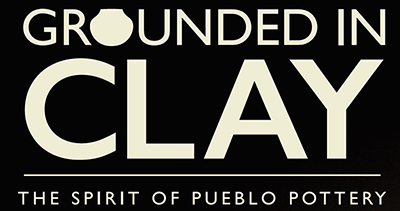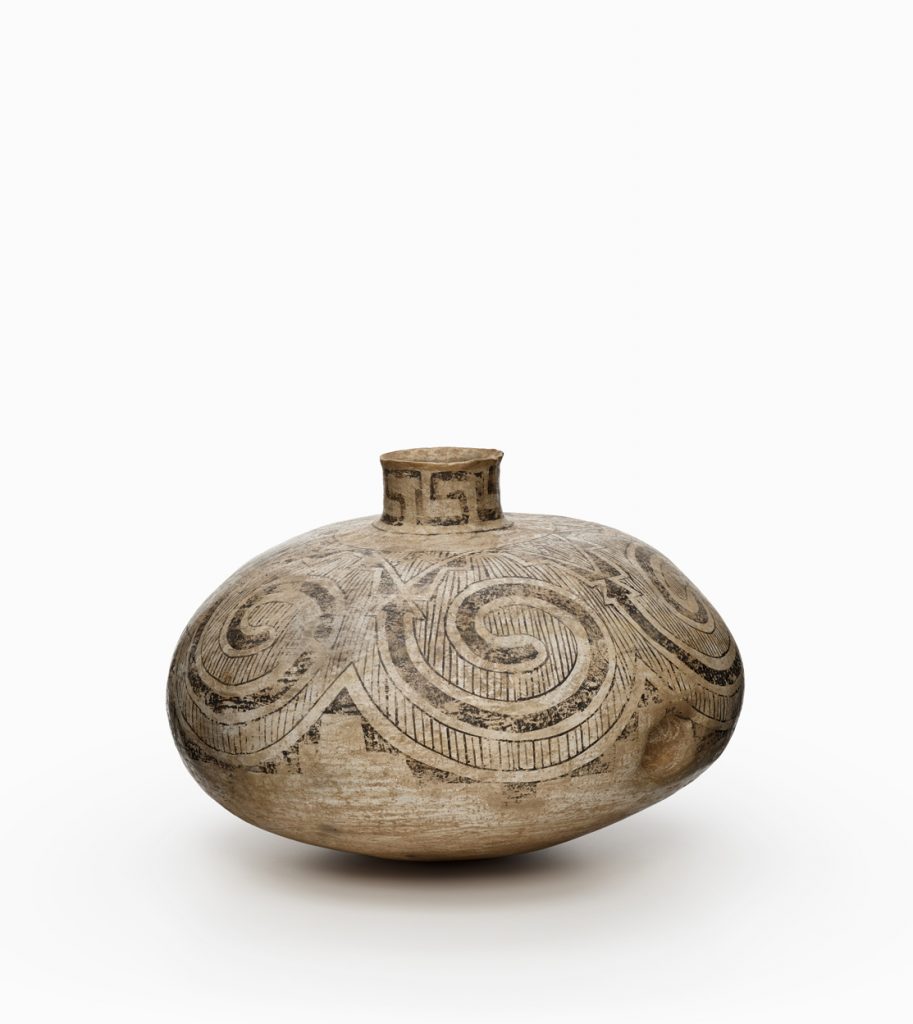Tara Gatewood
Isleta Pueblo/Diné
Curator Tara Gatewood (Isleta, Diné) is, by birth, a daughter, granddaughter, great granddaughter, sister, aunt, and niece of strong, resilient Pueblo women; by trade, she is a storyteller, photographer, and print and broadcast journalist.
Tara chose the following for the Grounded in Clay exhibit:
From Me to You
This vessel is a doorway through which to connect with all those who came before us and with their ties to the land. It also speaks of the diversity and unity of the peoples of the Southwest, and of the reasons why there are those who continue to fight to keep sacred places sacred. This commonality reminds me of the work I do as a radio presenter, connecting many different nations through the airwaves to find common ground. The designs on this vessel are echoed in what we see today in modern pot creations. It is no surprise, since strong design and essential stories carry through the generations with ease and secure their own survival. This pot was made before there was a Santa Fe Indian Market.
Perhaps the full truth of this dynamic vessel— which is recorded as being created between the years 1050 and 1300, somewhere in the vast territory catalogued as Mogollon—will one day manifest. I have learned that asking the right questions unlocks the full story. So here goes …
To the maker:
Py’you Kah-que’whem?
Is your blood mine?
Did you think of me when you were forming the clay?
Is water life?
Where else beyond the surface of this vessel do your fingerprints appear on the blueprint of my own life?
Your struggles, my celebrations? My struggles, your celebrations? Your triumph, my evolution? My evolution, your triumph? Your freedom, my culture? My freedom, your culture?
Who was the first to put the divots in their pot? How long did it take before the next potter followed suit? Did some savvy auntie push into the clay to improve the design? Did a rabbit run into it while the clay was still soft, thus birthing the brilliance of a new function?
Who was your biggest artistic influence? Did you ever get to create alongside them? Share a drink of water? Out-laugh them during the hottest part of the day? Squeeze them a little tighter to let them know your gratitude?
Why six swirls? Six migrations? Six directions? Six clans? Six sisters? Six secrets?
When was the best day to be Indigenous?
Red or green? Or Christmas?¹ Eyeballs, tongue, heart, or liver?
What was considered the true health of the community?
Was the pottery’s opening the center of your universe? Besides you, who also peered into it?
What type of unity did this creation bring to your heart? To those under your roof? To your community? Your enemies? Your admirers?
To the vessel:
What all went into the fire that solidified your formation?
Are you the end result of what momma, auntie, or clan father asked for?
Which line was first to stretch over your surface? Which brushstroke felt the best? Which made you the proudest?
What songs were offered to you?
Who was gifted the path to carry you, you ambassador of time and space?
I am a journalist—final question, I promise!
To you reading this right now, the viewer, the visitor, the ancestor:
Who were you when you stepped to this pot, and who are you now?
¹ When you order food in New Mexico, it is common to be asked “Red or green?”—meaning red or green chile. If you want both, the reply is “Christmas.”

